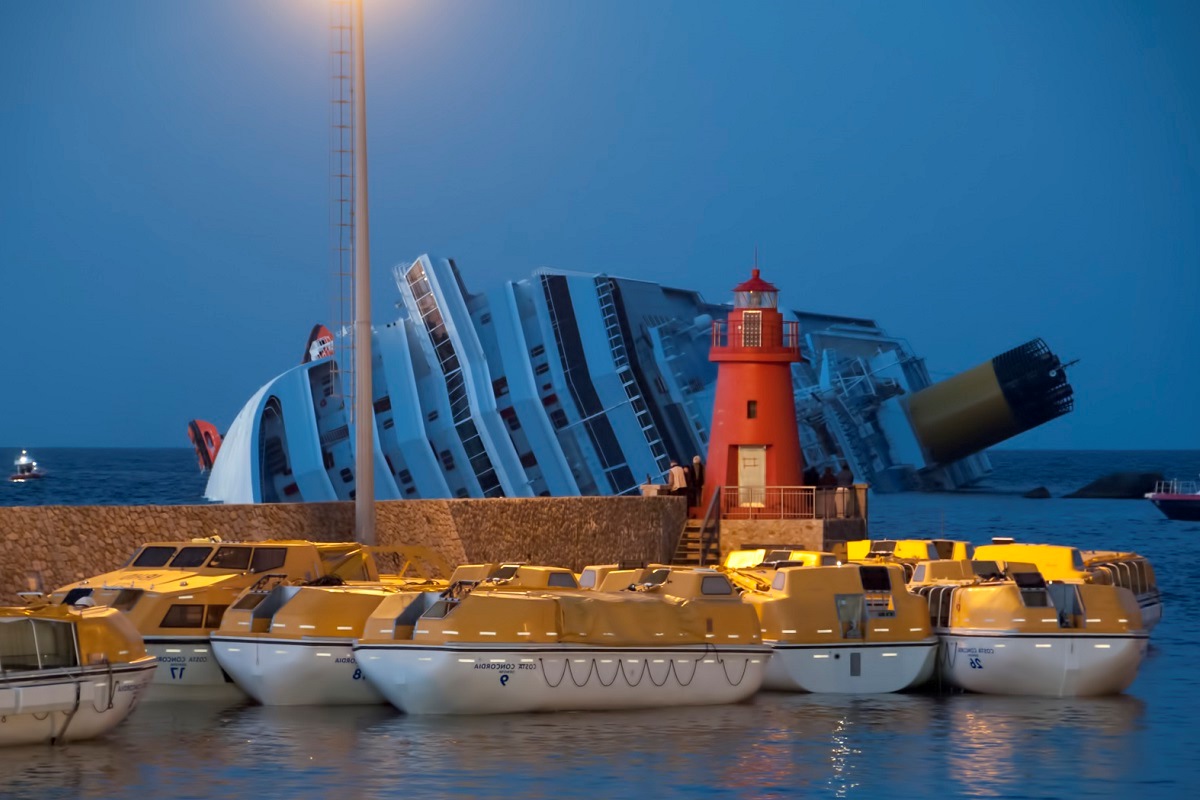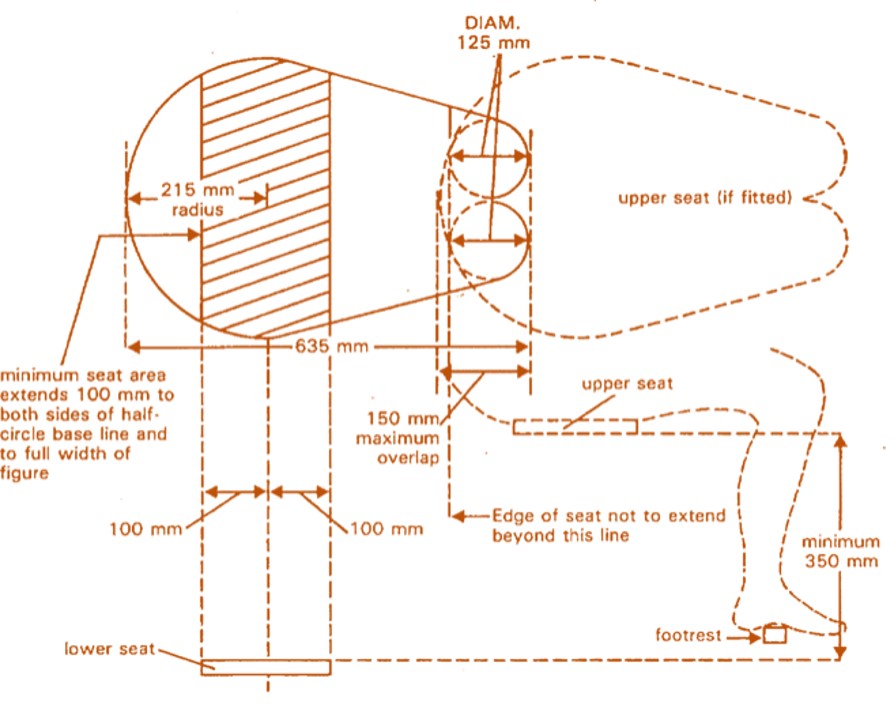LIFEBOATS ON SHIPS

LIFEBOATS ON SHIPS
GENERAL REQUIREMENTS FOR LIFEBOATS
- All lifeboats shall be properly constructed and shall be of such form and proportions that they have ample stability in a seaway and sufficient freeboard when loaded with their full complement of persons and equipment.
- All lifeboats shall have rigid hulls and shall be capable of maintaining positive stability when in an upright position in calm water and loaded with their full complement of persons and equipment and holed in any one location below the waterline, assuming no loss of buoyancy material and no other damage.
- For items that a lifeboat should carry refer to our elaborate guide with amazing presentation here
Each lifeboat shall be fitted with a certificate of approval, endorsed by the Administration, containing at least the following items:
- manufacturer’s name and address;
- lifeboat model and serial number;
- month and year of manufacture;
- number of persons the lifeboat is approved to carry; and
- with approval information including the Administration which approved it, and any operational restrictions.
The certifying organization shall provide the lifeboat with a certificate of approval which, in addition to the above items, specifies:
- number of the certificate of approval;
- material of hull construction, in such detail as to ensure that compatibility problems in repair should not occur;
- total mass fully equipped and fully manned;
- statement of approval.
All lifeboats shall be of sufficient strength to:
- enable them to be safely launched into the water when loaded with their full complement of persons and equipment;
- be capable of being launched and towed when the ship is making headway at a speed of 5 knots in calm water.
Hulls and rigid covers shall be fire-retardant or non-combustible.
Seating shall be provided on thwarts, benches or fixed chairs which are constructed so as to be capable of supporting:
- a static load equivalent to the number of persons each weighing 100 kg for which spaces are provided in compliance with the seating requirements shown on below
- a load of 100 kg in any single seat location when a lifeboat to be launched by falls is dropped into the water from a height of atleast 3 m;
- a load of 100 kg in any single seat location when a free-fall lifeboat is launched from a height of at least 1.3 times its free-fall certification height.
Except for free-fall lifeboats, each lifeboat to be launched by falls shall be of sufficient strength to withstand a load, without residual deflection on removal of that load:
- in the case of boats with metal hulls, 1.25 times the total mass of the lifeboat when loaded with its full complement of persons and equipment; or
- in the case of other boats, twice the total mass of the lifeboat when loaded with its full complement of persons and equipment.
Except for free-fall lifeboats, each lifeboat to be launched by falls shall be of sufficient strength to withstand, when loaded with its full complement of persons and equipment and with, where applicable, skates or fenders in position, a lateral impact against the ship’s side at an impact velocity of at least 3.5 m/s and also a drop into the water from a height of at least 3 m.
The vertical distance between the floor surface and the interior of the enclosure or canopy over 50% of the floor area shall be:
- not less than 1.3 m for a lifeboat permitted to accommodate nine persons or less;
- not less than 1.7 m for a lifeboat permitted to accommodate 24 persons or more; and
- not less than the distance as determined by linear interpolation between 1.3 m and 1.7 m for a lifeboat permitted to accommodate between nine and 24 persons.
No lifeboat shall be approved to accommodate more than 150 persons.
The number of persons which a lifeboat to be launched by falls shall be permitted to accommodate shall be equal to the lesser of:
- the number of persons having an average mass of 75 kg, all wearing life jackets, that can be seated in a normal position without interfering with the means of propulsion or the operation of any of the lifeboat’s equipment; or
- the number of spaces that can be provided on the seating arrangements in accordance with figure 1. The shapes may be overlapped as shown, provided footrests are fitted and there is sufficient room for legs and the vertical separation between the upper and lower seat is not less than 350 mm.
Access into lifeboats
- Every passenger ship lifeboat shall be so arranged that it can be rapidly boarded by its full complement of persons. Rapid disembarkation shall also be possible.
- Every cargo ship lifeboat shall be so arranged that it can be boarded by its full complement of persons in not more than 3 min from the time the instruction to board is given. Rapid disembarkation shall also be possible.
- Lifeboats shall have a boarding ladder that can be used at any boarding entrance of the lifeboat to enable persons in the water to board the lifeboat. The lowest step of the ladder shall be not less than 0.4 m below the lifeboat’s light waterline.
- The lifeboat shall be so arranged that helpless people can be brought on board either from the sea or on stretchers.
- All surfaces on which persons might walk shall have a non-skid finish.
Lifeboat buoyancy
- All lifeboats shall have inherent buoyancy or shall be fitted with inherently buoyant materialw hich shall not be adversely affected by seawater, oil or oil products, sufficient to float the lifeboat with all its equipment on board when flooded and open to the sea.
- Additional inherently buoyant material, equal to 280 N of buoyant force per person shall be provided for the number of persons the lifeboat is permitted to accommodate.
- Buoyant material, unless in addition to that required above,shall not be installed external to the hull of the lifeboat.
Lifeboat free-board and stability
- All LB shall be stable and have a positive GM value when loaded with 50% of the number of persons the lifeboat is permitted to accommodate in their normal positions to one side of the centreline.
Under the condition of loading described above:
- each LB with side openings near the gunwale shall have a free board, measured from the waterline to the lowest opening through which the lifeboat may become flooded, of at least 1.5% of the lifeboat’s length or 100 mm, whichever is the greater;
- Each LB without side openings near the gunwale shall not exceed an angle of heel of 20° and shall have a free board,measured from the waterline to the lowest opening through which the lifeboat may become flooded, of at least 1.5% of the lifeboat’s length or 100 mm, whichever is the greater.
Lifeboat propulsion
- Every LB shall be powered by a compression ignition engine. No engine shall be used for any lifeboat if its fuel has a flashpoint of43°C or less (closed cup test).
- The engine shall be provided with either a manual starting system, or a power starting system with two independent rechargeable energy sources. Any necessary starting aids shall also be provided. The engine starting systems and starting aids shall start the engine at an ambient temperature of -15°C within 2 min of commencing the start procedure unless, in the opinion of the Administration having regard to the particular voyages in which the ship carrying the lifeboat is constantly engaged, a different temperature is appropriate.
- The starting systems shall not be impeded by the engine casing, seating or other obstructions.
- The speed of a lifeboat when proceeding ahead in calm water, when loaded with its full complement of persons and equipment and with all engine powered auxiliary equipment in operation, shall be at least 6 knots and at least 2 knots when towing a 25-person life-raft loaded with its full complement of persons and equipment or its equivalent. Sufficient fuel, suitable for use throughout the temperature range expected in the area in which the ship operates, shall be provided to run the fully loaded lifeboat at 6 knots for a period of not less than 24 h.
- Water-resistant instructions for starting and operating the engine shall be provided and mounted in a conspicuous place near the engine starting controls.
Lifeboat fittings
- All LB except free-fall lifeboats shall be provided with at least one drain valve fitted near the lowest point in the hull, which shall automatically open to drain water from the hull when the lifeboat is not waterborne and shall automatically close to prevent entry of water when the lifeboat is waterborne.
- Each drain valve shall be provided with a cap or plug to close the valve, which shall be attached to the lifeboat by a lanyard, a chain, or other suitable means. Drain valves shall be readily accessible from inside the lifeboat and their position shall be clearly indicated.
- All LB shall be provided with a rudder and tiller. The rudder shall be permanently attached to the lifeboat.
- All LB shall be fitted with sufficient watertight lockers or compartments to provide for the storage of the small items of equipment,water and provisions.
- Every LB to be launched by a fall or falls, except a free-fall lifeboat, shall be fitted with a release mechanism, which shall be so arranged that all hooks are released simultaneously and release control shall be clearly marked in a color that contrasts with its surroundings.
- Every LB shall be fitted with a device to secure a painter near its bow. The device shall be such that the lifeboat does not exhibit unsafe or unstable characteristics when being towed by the ship making headway at speeds up to 5 knots in calm water.
Lifeboat markings
- The number of persons for which the lifeboat is approved shall be clearly marked on it in clear permanent characters.
- The name and port of registry of the ship to which the lifeboat belongs shall be marked on each side of the lifeboat’s bow in block capitals of the Roman alphabet.
- Means of identifying the ship to which the lifeboat belongs and the number of the lifeboat shall be marked in such a way that they are visible from above.



